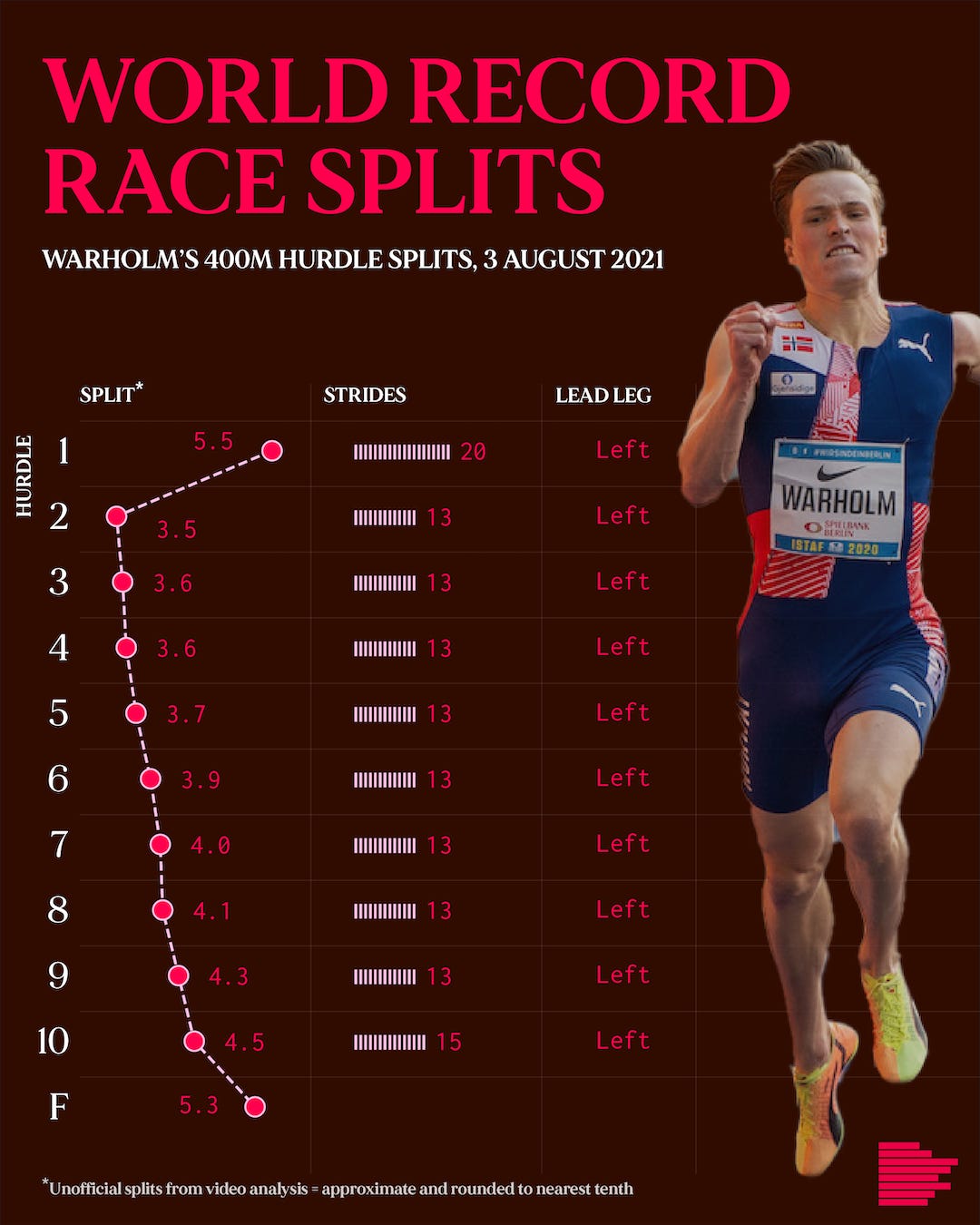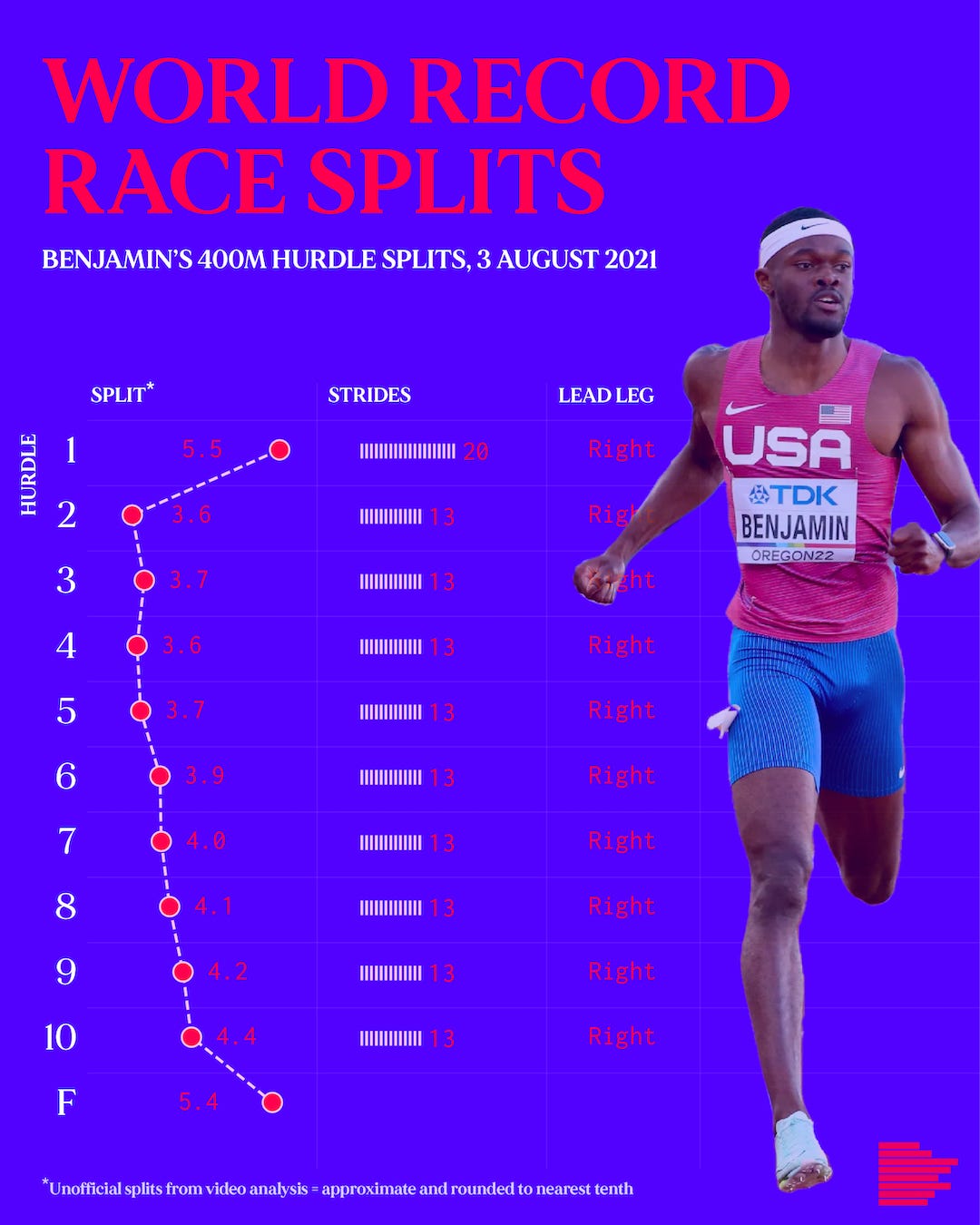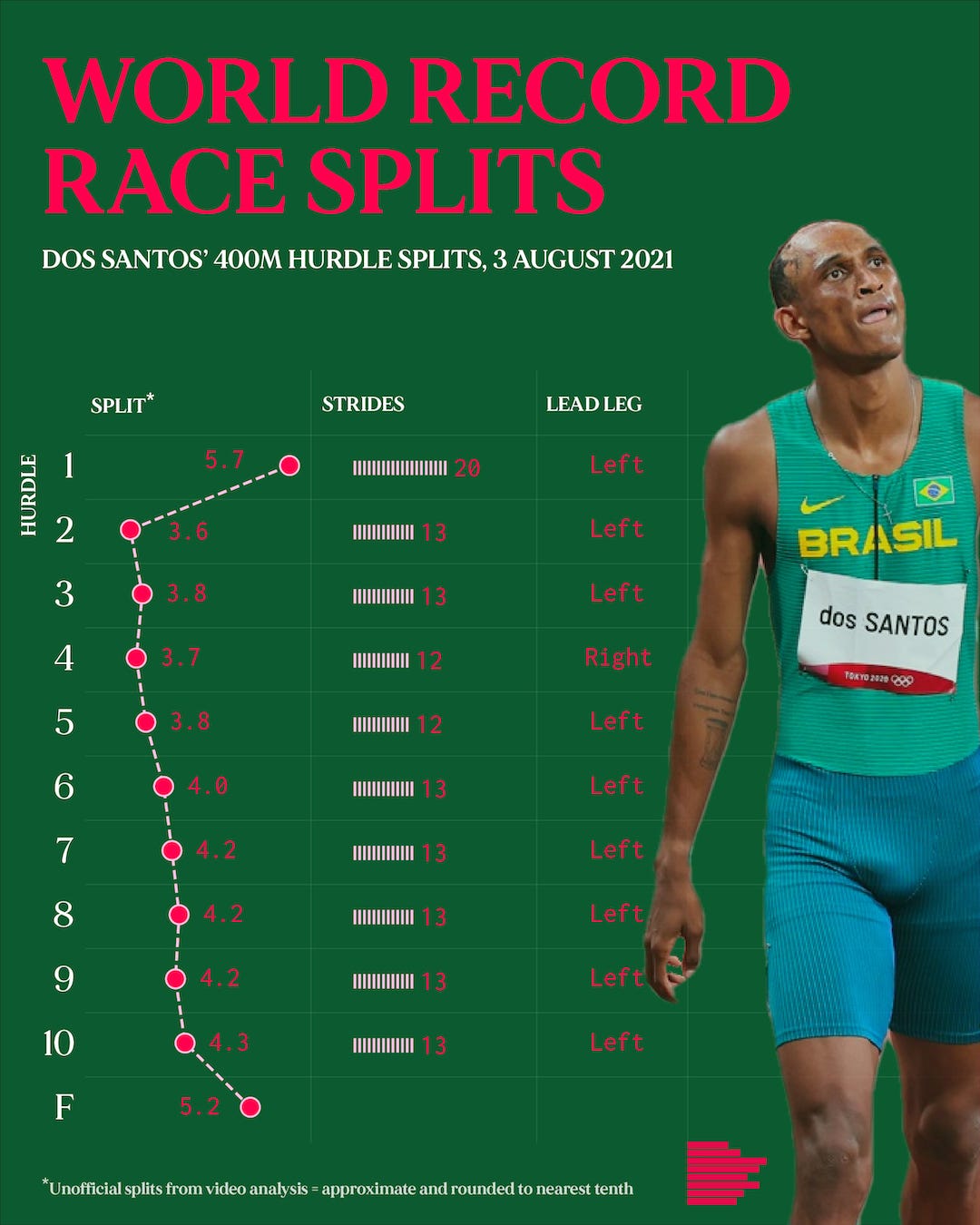The Evolution of the 400 Hurdles
Remember when 47 seconds and 53 seconds in the 400H were gold medals? Not anymore.
As a past 400 hurdler, a huge fan of the event, and a passionate coach, I have always watched closely to see how the hurdle events evolve. The world watched Karsten Warholm and Rai Benjamin change the standard of what is good in the 400 hurdles. Sydney McLaughlin-Levrone, Dalilah Muhammad, and Femke Bol (and others) flipped the women’s side, posting performances that were once considered good for a male athlete.
The days of slow starts, average speed, average hurdling, and inconsistent stride pattern are gone. If you want to be in the game, you must sprint fast, maintain a stride pattern of minimal steps, and hurdle at a strong level. If you lack significantly in any of the three areas, you will be left. And that is trickling down to every level…from pros, to collegiates, to clubs, and high school.
Just before Warholm, Benjamin, and Dos Santos broke the men’s world record, the past world record holder, Kevin Young, was interviewed. His record of 46.78 was set in 1992 and lasted almost 30 years. Interestingly, Young said, “When I broke the world record I ran six seconds to the first hurdle. (I think) Between 5.8 and six seconds. I think it’s six seconds. Rai (Benjamin) told me it was 5.8 seconds. And I asked him, ‘How fast are you getting to the first hurdle?’ He said 5.5. And I said, ‘You guys are running too damned fast.’ ”. Young is known for the comment after it was shared online, going into the 2021 Olympic final. For this article’s sake, let’s assume that Young believed these guys were trying to get out too fast to hurdle one. I disagree. Speed early is key in most (if not all) speed races.
Soon after Kevin Young’s quote, the three men (Warholm, Benjamin, and Dos Santos) would drop under his previous world record at the Tokyo Olympics. Karsten Warholm led the group from start to finish at 45.94. The first and only man to do the unthinkable—drop under 46 seconds. Rai Benjamin gave him a race, and finished at 46.17—the second fastest man ever. And Alison Dos Santos closed hard to go 46.72. All three men finished under Kevin Young’s record of 46.78. Coincidentally, each man sped to hurdle one in a way that has never been seen.
All three men touched down at the first hurdle faster than 5.8 seconds! Warholm blasted the field from the gun, touched down at a hot 5.5 seconds, and Benjamin was right there with the same rounded time. Dos Santos was just off that pace at 5.7 seconds. AND ALL THREE MEN took 20 steps to the first hurdle. What are your athletes’ steps?
What do they have in common?
They got out fast. And the women are following the same suit. Sydney McLaughlin-Levrone, Femke Bol, and Anna Cockrell all carried more speed hurdle to hurdle with less steps. The infamous Sydney McLaughlin-Levrone has mastered the event going 14 steps between each hurdle. That is both impressive in the way that she can take so few steps fast and comfortably, but also because it means she alternates legs for much of the race. And that’s not the norm. That fundamental fact has allowed her to break the world record six times! Anyway, all these women start fast, even though they make it look so easy.
And it started at the START. It’s no different than any other sprint race. A drive phase, push steps, aggression and speed to that first barrier. I’ve seen coaches veer towards 600m to 800m training for 400H athletes. I never understood it, and never will. It’s 400 meters!!! Ideally, we are trying to get these hurdlers within 2-3 seconds of their open 400m best. So why would we suddenly train them for races over a minute/double the distance? Never mind the question, because I don’t want someone coming at me with an answer that makes my eyes pop out of my head.
Milesplit posted an article that shared, “McLaughlin's splits between each hurdle were 5.91, 3.88, 4.02, 4.05, 4.16, 4.27, 4.43, 4.52, 4.65, and 4.82, and 5.66 from the final hurdle to the finish line.” (milesplit article). These splits are FAST, faster than many men in the hurdle race. Under 6.0 seconds to hurdle 1 is insanely fast! Let alone the 3.88 to hurdle 2 and the 4.0s that follow.
A good collegiate hurdle split for the first hurdle WOMEN: 6.4 MEN: 6.0
A good collegiate hurdle split for hurdles 2-10 WOMEN: 4.2-4.6 MEN: 3.7-4.10
Let’s Recap:
To be fast today in the 400H, athletes need to…
RACE to the first hurdle — have the fastest touchdown to hurdle one
Learn to alternate & alternate smoothly
Take the fewest steps in between each hurdle (Dos Santos & McLaughlin-Levrone have this mastered)
Run with sprint tech from start to finish line
Just like the short hurdles, the long hurdles are a speed event. We must get our hurdlers to start faster and have faster hurdle splits. They must maintain speed and tech while having control over their stride pattern. The game for men is now 46 seconds. Are you working your athletes to that? The game for the women is 51-52 seconds, with the world record being 50 point. Are you working your athletes to that? If you’re not, I don’t understand why. Your athletes might never be pros, but we can train them like pros.
😤Want to know how to train your high school athlete like a 400H pro? Come to ELITE HURDLE CAMP! Register now!😤
Even though Warholm, Benjamin, and Dos Santos are still in their “prime” they’ve never been head to head, fully healthy since Tokyo which is why the record still stands. Maybe we’ve seen the best ever for another decade.
P.S. Alison Dos Santos might be the next best man ever. He can hold the 12-step pattern longer than anyone else in history.







